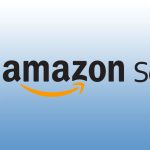Open source software (OSS) provides a wealth of advantages for organizations and developers. From increased flexibility to cost savings, open source enables innovation and collaboration. This comprehensive guide covers the array of benefits you can realize with open source software and provides tips to leverage its potential.
Cost Savings
One of the primary appeals of open source software is its cost-effectiveness. Rather than spending large sums on proprietary software licenses and vendor lock-in, open source offers free access and significant budget relief.
Reduce Upfront Expenses
Most open source licenses permit free downloads, installations, use and distributions of the software. This alleviates the large upfront investments often associated with commercial closed source software. No per user licensing fees also keeps ongoing expenses low.
For resource constrained organizations like non-profits and startups, avoiding these big ticket purchases can mean redirecting budgets to focus on your core operations and objectives rather than significant software licensing costs.
Avoid Vendor Lock-in
Proprietary software often forces you down a single vendor path, limiting your flexibility in scaling software as needs change. This can mean being strong-armed into high licensing renewals and paying for features you may not necessarily want or need.
Because open source provides access to the source code, you retain control to modify your implementation and find alternative support rather than being locked into a single vendor’s roadmap.
Enhanced Flexibility
The ability to freely view and modify source code is one of the defining aspects of open source software. This opens the door to significant flexibility and customizations not feasible in closed source alternatives.
Adapt Software to Your Needs
Every organization has unique needs and workflows. Off the shelf proprietary programs often fall short in addressing specialized requirements. With full access to code, open source can be molded to fit an organization’s specific use cases.
Developers can add custom features, integrate with internal legacy systems and optimize performance for your hardware environment. Both simple and complex customizations help maximize operational efficiency and streamline processes.
Fix Issues and Enhance Capabilities
Bugs and deficiencies in proprietary software typically mean waiting for the next vendor update, often on their timeline rather than yours. Open source empowers developers to rapidly diagnose issues and release fixes when needed rather than waiting on a lengthy vendor update and release process.
Enhancements can also be contributed back to the community, allowing everyone to benefit from new features over time. This flexibility enables open source software to quickly evolve and improve.
-png-1.png)
Community Support and Collaboration
Among open source’s greatest assets is its community. With a critical mass of contributors, issues are quickly spotted and features are organically enhanced. This helps distribute support and avoid sole reliance on a single vendor.
No Vendor Lock for Support
Every organization inevitably encounters tech challenges requiring troubleshooting assistance and support. With proprietary closed source options, you are typically locked into a single vendor’s designated assistance resources.
Open source offers support choices, including utilizing community forums, online resources as well as commercial support vendors. Having options helps avoid delays in issue resolution. With many contributors intimately familiar with the code, community support brings informed perspectives.
Shared Innovation Through Collaboration
The open and collaborative development culture fosters organic innovation. With a critical mass of global contributors collaborating, new use cases emerge. Features organically evolve fueled by collective creativity. Everyone in the community benefits from these enhancements over time.
This culture of shared innovation propels open source technology forward, often at speeds exceeding proprietary alternatives limited to employees of a single vendor. Passionate communities drive progress through collaboration.
Development Velocity
For developers, open source offers practical advantages in both productivity and skill building. Development speeds can accelerate with open source by standing on the shoulders of code contributions rather than starting from scratch.
Faster Time to Market
The ability to leverage existing and actively maintained open source libraries and frameworks enables faster application development. Rather than reinventing foundational components like user management, theming, data stores etc., developers can dedicate time to building business logic and custom capabilities.
Accelerating repetitive early development tasks allows focusing innovation where it matters most – your unique value-add. Combine this with open source community support and assistance during application development, teams can achieve quicker time to market.
Acquire New Skills
For developers early in their careers, contributing to open source projects provides hands-on experience and skill building opportunities. Learning how large and complex applications are architected and coded allows absorption of best practices and technical knowledge.
Troubleshooting bugs and reviewing feature improvements grow analytical abilities and mastery over languages and tools. These talents allow developers to become valued technical contributors, whether to open source communities or internal teams.
Open Source Challenges
While open source offers an array of advantages, it also comes with some notable drawbacks to consider.
Lack of Official Support
Where proprietary software invests heavily in technical support infrastructure, open source typically relies on community resources. While community assistance can be quite helpful, response times can vary greatly and at times be non-existent. Critical issues may go unaddressed.
For mission critical systems requiring immediate issue resolution, proprietary software with service level agreement (SLA) backed official support may be the pragmatic choice. Correctly assessing organizational risk tolerance is key in determining if open source community assistance meets requirements.
Potential Security Vulnerabilities
Transparency into source code allows the community to rapidly address vulnerabilities. However lack of visibility into contributors can pose some risk depending on the maturity of the open source project.
Evaluating the size of the development community, their responsiveness to disclosures and historical patching track record offers insights into security posture. Proprietary options with paid teams focused on security management may rate higher for some high risk use cases.
Compatibility Complexities
A common appeal of open source is mixing and matching components from different projects. Unfortunately incompatibilities sometimes arise with certain combinations leading to technical issues.
Thorough testing is key when integrating varied open source libraries and frameworks. Lack of coordination across disparate developer teams contributes to these challenges. However with proper validation, the diversity of open source choice pays dividends.
Tips For Open Source Success
Keep these tips in mind to maximize the advantages of open source software.
Evaluate Project Activity Levels
Choose open source projects with large active development communities for best results. Metrics like code commit frequency, bugs resolved, community size offer quantifiable insights into development momentum.
Assess Support Options
Determine if community assistance meets organizational requirements or if commercial open source support subscriptions are beneficial. Also evaluate training resources to build internal self-sufficiency.
Allocate Testing Budget
Compatibility issues remain a possibility when combining open source components. Budget time for integrations testing to catch problems early. Automated testing reduces long term maintenance costs.
Start Small
Before making open source software a strategic pillar in your organization, start with tactical departmental implementations. This allows familiarization and building internal skills before broader deployments.
Contribute Back
Give back to projects your organization benefits from. This builds goodwill and influence while advancing the software capabilities. Even small fixes help the community and enhance skills.
Conclusion
The multitude of technical and business advantages from open source software makes it a compelling choice for organizations. From increased flexibility to cost control, open source empowers innovation across application development and business operations.
Understanding both the benefits and challenges, rather than simply comparing to proprietary alternatives, allows making the right software decisions. Follow these best practices to maximize the return when leveraging open source software.











Add Comment